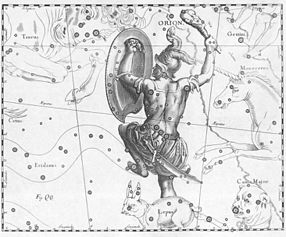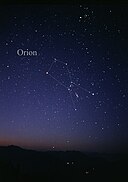Constellations
|
|||
|
|||
A constellation is formally defined as a region of the celestial sphere, with boundaries laid down by the International Astronomical Union (IAU). The constellation areas mostly had their origins in Western-traditional patterns of stars from which the constellations take their names.
In 1922 the International Astronomical Union officially recognized the 88 modern constellations, covering the entire sky. They began as the 48 classical Greek constellations laid down by Ptolemy in the Almagest. Constellations in the far southern sky are late 16th- and mid 18th-century constructions. 12 of the 88 constellations compose the zodiac signs, though the astronomical positions of the constellations only loosely match the dates assigned to them in astrology.
The term constellation can also refer to the stars within the boundaries of that constellation. Notable groupings of stars that do not form a constellation are called asterisms. When astronomers say something is “in” a given constellation they mean it is within those official boundaries.
Any given point in a celestial coordinate system can unambiguously be assigned to a single constellation (but see Argo Navis). Many astronomical naming systems give the constellation in which a given object is found along with a designation in order to convey a rough idea in which part of the sky it is located. For example, the Flamsteed designation for bright stars consists of a number and the genitive form of the constellation name.
The word "constellation" seems to come from the Late Latin term cōnstellātiō, which can be translated as "set of stars", and came into use in English during the 14th century. A more modern astronomical sense of the term is as a recognisable pattern of stars whose appearance is associated with mythological characters or creatures, or associated earthbound animals or objects. It also denotes 88 named groups of stars in the shape of stellar-patterns.
...
Wikipedia



